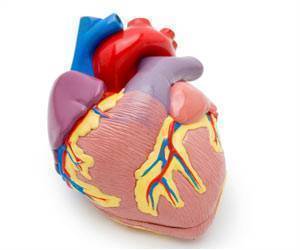New study sheds light on how the shape of these muscles impacts heart performance and heart failure.

‘The rough surface of the heart ventricles allows blood to flow more efficiently during each heartbeat, just like the dimples on a golf ball reduce air resistance and help the ball travel further.’





"Our work significantly advanced our understanding of the importance of myocardial trabeculae," explains Hannah Meyer, a Cold Spring Harbor Laboratory Fellow. "Perhaps even more importantly, we also showed the value of a truly multidisciplinary team of researchers. Only the combination of genetics, clinical research, and bioengineering led us to discover the unexpected role of myocardial trabeculae in the function of the adult heart." To understand the roles and development of trabeculae, an international team of researchers used artificial intelligence to analyse 25,000 magnetic resonance imaging (MRI) scans of the heart, along with associated heart morphology and genetic data. The study reveals how trabeculae work and develop, and how their shape can influence heart disease. UK Biobank has made the study data openly available.
Leonardo da Vinci was the first to sketch trabeculae and their snowflake-like fractal patterns in the 16th century. He speculated that they warm the blood as it flows through the heart, but their true importance has not been recognized until now.
"Our findings answer very old questions in basic human biology. As large-scale genetic analyses and artificial intelligence progress, we're rebooting our understanding of physiology to an unprecedented scale," says Ewan Birney, deputy director general of EMBL.
The study also highlights six regions in human DNA that affect how the fractal patterns in these muscle fibers develop. Intriguingly, the researchers found that two of these regions also regulate branching of nerve cells, suggesting a similar mechanism may be at work in the developing brain.
Advertisement
Further research on trabeculae may help scientists better understand how common heart diseases develop and explore new approaches to treatment.
Source-Eurekalert













